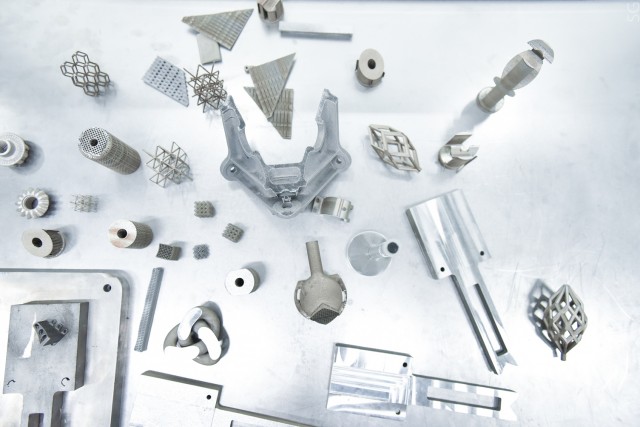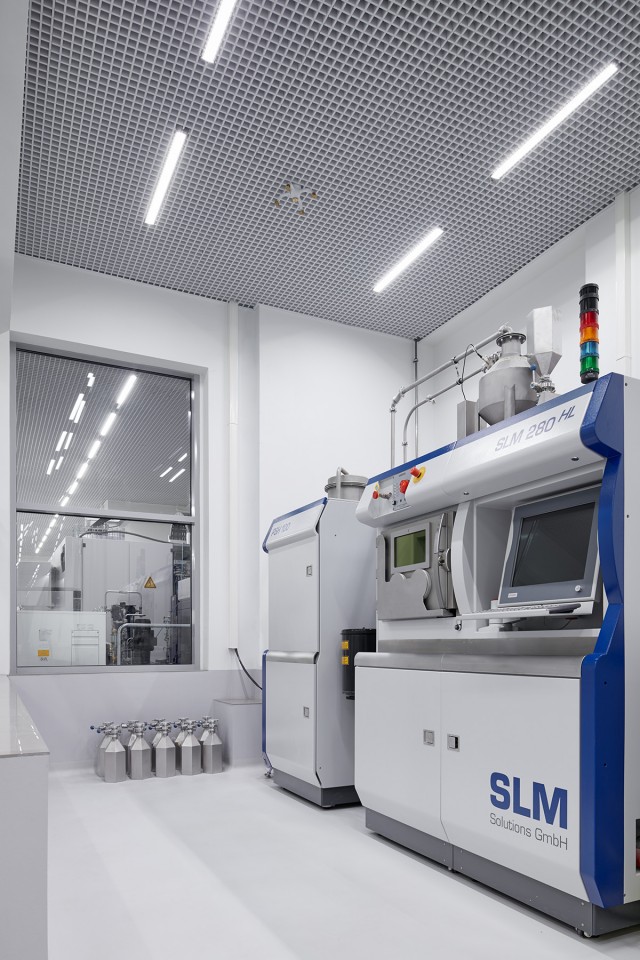One of the most sought-after areas of additive technology is 3D printing of aerospace composites. Basically, titanium is used to manufacture aircraft parts. It is durable, corrosion-resistant, resistant to loads ... BUT: titanium is very dense, therefore, heavy, so no matter how good it is, you need to look for an alternative. Scientists of NUST “MISiS” found it - and this is aluminum. But how, is he much less durable? About why this is no longer a problem, and what does 3D technology have to do with it - in our article.

Samples of products obtained by one of the methods of additive production - SLM (about it also below)
Scientists of NUST “MISiS” under the guidance of professor, doctor of technical sciences, Alexander Gromov have developed a 3D printing method for aluminomatrix (aluminum-based) composite materials with reinforcing ceramic fillers (aluminum oxide and nitride). Using the method of selective laser melting (SLM), the researchers obtained composites that are 20% more durable compared to samples of pure aluminum.
SLM is a 3D printing technology in which a metal powder is melted by a laser beam. First, create a 3D model of the product. Then it is divided into 2D layers, which are printed sequentially one on top of the other. A thin layer of powder is applied to a special platform, then the laser fuses the 2D model along the contours, the platform lowers, a new layer of powder arrives, and the cycle continues.

Raw materials used by scientists
“For the 3D printing of aluminum parts, the so-called silumins (aluminum-silicon alloys, in particular, the Al-Si-10Mg compound) are mainly used as feedstock,” says project manager Alexander Gromov . “However, the demands of the aerospace industry are growing, and the world is now actively searching for new compositions of aluminomatrix composites (including modified, alloyed) to obtain parts with improved performance (strength, hardness, resistance to cracking) and low cost compared to containing rare earth alloys. "
Scientists of NUST “MISiS” were able to increase the strength of aluminum powders due to hardening with ceramic additives directly in the process of 3D printing (the so-called in situ modification). Previously it was believed that obtaining such composites on printers such as SLM is impossible, for this special, unique 3D printers are needed. However, the group managed to create pilot batches of the new powder material on a conventional SLM-280 HL printer.

Photo Printer SLM-280 HL
The proposed methods for producing 3D products from aluminum composites with improved properties increase the flexibility of their design, reduce the production time of functional prototypes, and reduce the mass of parts by 10-20%.
Currently, the research team is completing a series of laboratory tests of the received batch of material. In the near future, researchers will begin the next phase of the project - obtaining the first samples of parts from the obtained aluminum-ceramic powder.
The study is conducted under a grant from the Russian Science Foundation, the results of the first stage are published in the journal Materials.